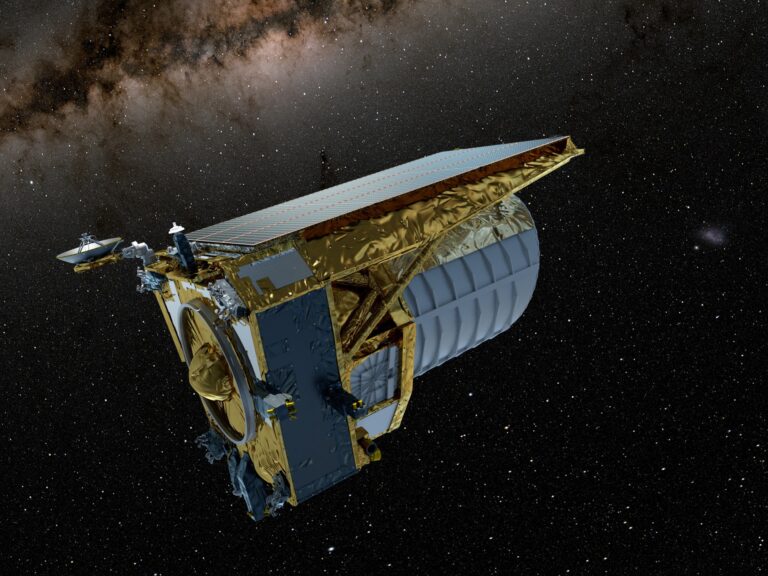The European House Company (ESA) has launched the primary pin-sharp photos despatched from the Euclid House Telescope, designed to unlock the secrets and techniques of darkish matter and darkish power – hidden forces thought to make up 95 p.c of the universe.
The photographs launched Tuesday confirmed a nebula resembling a horse’s head and never-before-seen distant galaxies, described by Euclid scientist Jean-Charles Cuillandre as “a collection of objects from the galactic zoo when it comes to range, colours and shapes.”
The ESA, which is main the six-year mission with US house company NASA as a companion, stated the photographs have been the sharpest of their sort, demonstrating the telescope’s capability to observe billions of galaxies as much as 10 billion light-years away.
The photographs coated 4 components of the comparatively close by universe, together with a thousand galaxies belonging to the huge Perseus cluster simply 240 million light-years away, and greater than 100 thousand galaxies scattered within the background, ESA stated.
Scientists imagine that huge, seemingly organized buildings like Perseus may solely come up if darkish matter exists.
Euclid set off in July on the world’s first-ever mission, aiming to research enduring cosmic mysteries, partially by mapping a 3rd of the sky – which encompasses two billion galaxies – to create what’s billed as probably the most correct 3D map of the universe ever.
After becoming a member of fellow house telescope James Webb at a secure floating spot about 1.5 million kilometers (over 930,000 miles) from Earth, Euclid started sending again his first observations.
ESA chief Josef Aschbacher stated in an announcement that the primary 5 photos of Euclid have been “awe-inspiring and remind us why it’s important that we go to house to study extra in regards to the mysteries of the universe.”
Listed here are the 5 photos, beginning with the one closest to Earth and shifting out into the cosmos:

Horsehead Nebula
A large pink horse seems to rear its head in opposition to a backdrop of swirling stars, a few of that are nonetheless being shaped in a star nursery.
The Horsehead Nebula – often known as Barnard 33 – is situated 1,375 light-years away.
The horse’s head is definitely a darkish cloud reverse ultraviolet radiation from Sigma Orionis, the jap star within the belt of the constellation Orion.
The Horsehead Nebula has been noticed earlier than, however the Euclid telescope is the primary to supply such a whole picture in simply an hour because of its vast lens.
Scientists hope that by sifting via Euclid’s observations of the nebula, they are going to discover beforehand unseen planets the scale of Jupiter, in addition to stars nonetheless of their infancy.
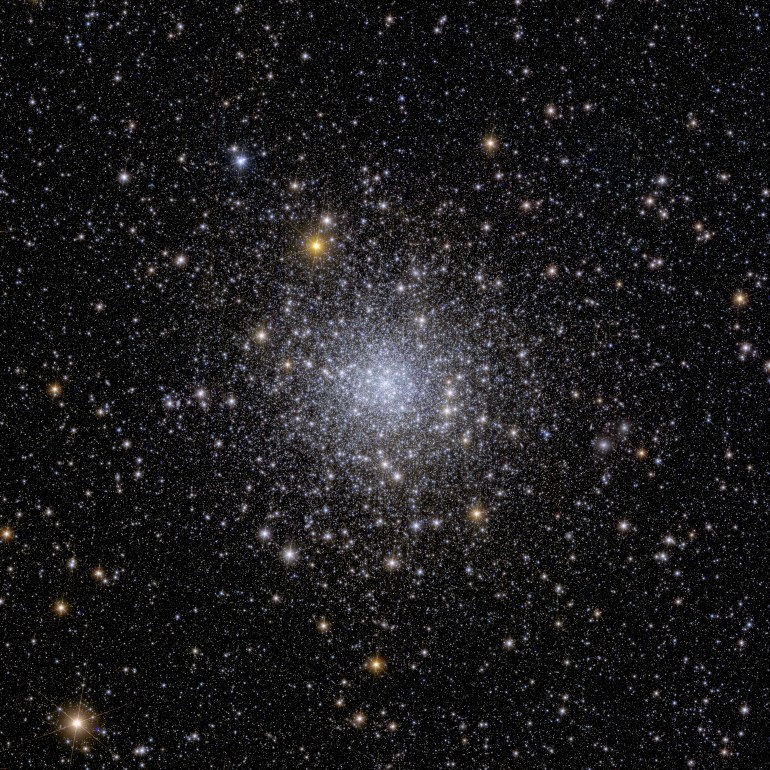
Globular star cluster NGC 6397
At a distance of seven,800 light-years – however nonetheless inside our Milky Means Galaxy – this cluster is a group of a whole lot of 1000’s of stars linked by gravity.
“At the moment, no telescope aside from Euclid can observe the whole globular cluster and on the identical time distinguish the faint stars within the outer areas from different cosmic sources,” Euclid Consortium scientist Davide Massari stated in an announcement.
Scientists hope to make use of Euclid’s observations to find stars, corresponding to globular clusters, as they journey via our Milky Means.
“The stunning factor is that we do not see these stars following,” Euclid mission scientist Rene Laureijs informed the AFP information company.
“One concept is that there could also be darkish matter across the globular cluster that holds all the celebrities collectively,” he says.
The ESA hopes that Euclid will shed extra gentle on darkish matter and darkish power, that are nonetheless shrouded in thriller.
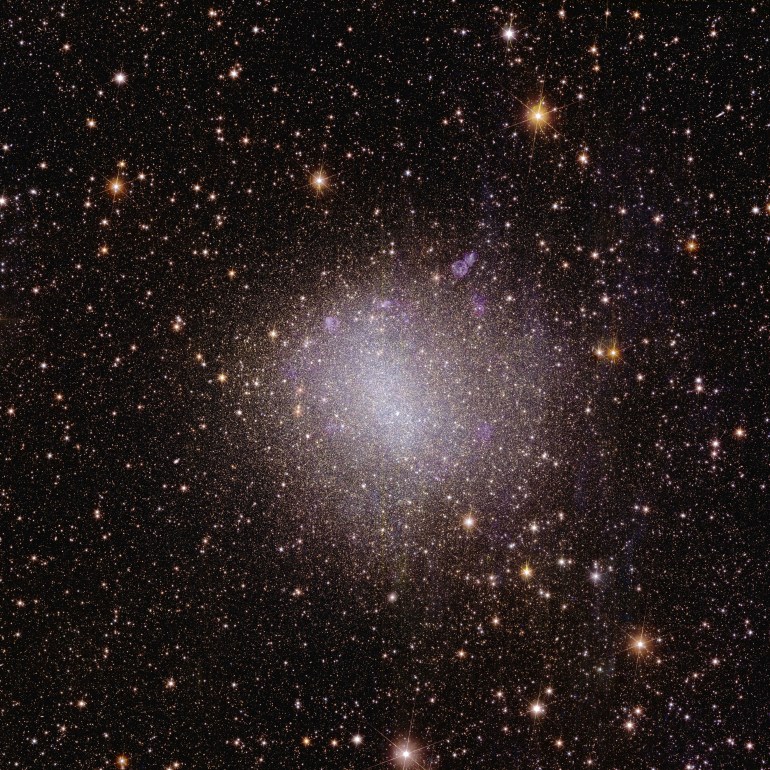
An irregular galaxy
Not all galaxies are lovely spirals like ours. Pictures of the irregular dwarf galaxy NGC 6822, about 1.6 million light-years away from Earth, have been captured beforehand, together with by the James Webb House Telescope.
Nonetheless, Euclid is the primary to seize the whole galaxy in simply an hour.
As is commonly the case within the early universe, this galaxy’s stars include little metallic, and scientists hope their evaluation will make clear how galaxies evolve.
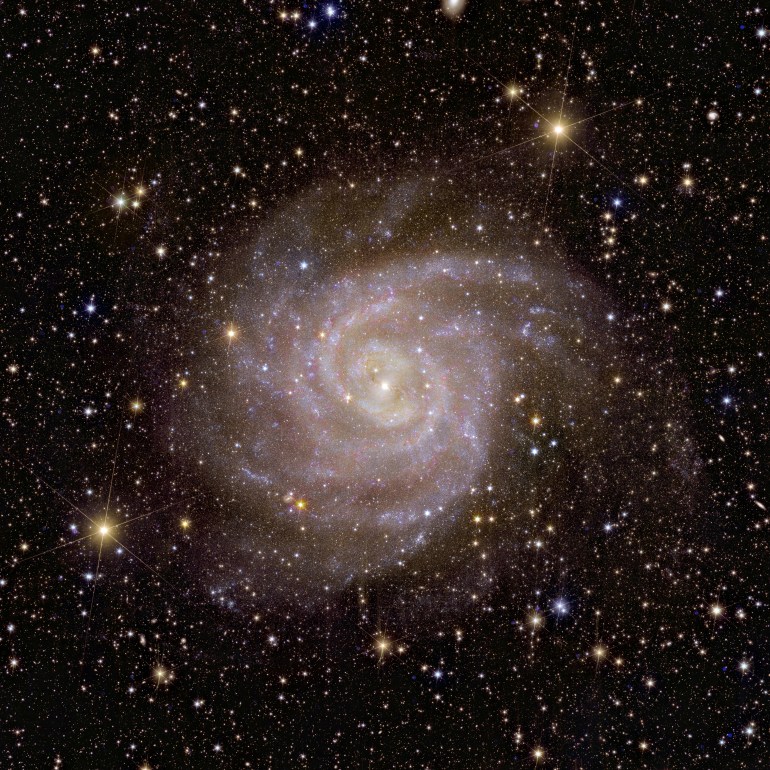
The Hidden Galaxy
The spiral galaxy IC 342 was nicknamed the ‘hidden galaxy’ as a result of it’s tough to find behind the disk of our personal Milky Means.
It’s comparatively shut – at the least in galactic phrases – about 11 million light-years from Earth.
Nonetheless, Euclid’s infrared imaginative and prescient was in a position to see via the mud and uncover never-before-seen globular clusters, ESA stated.
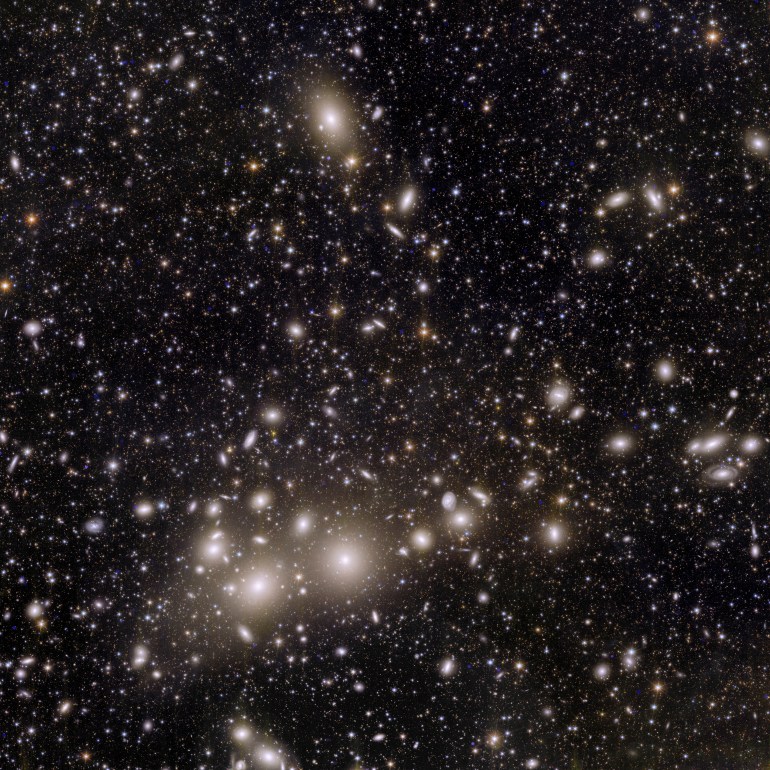
Perseus cluster
ESA described this picture as “a revolution for astronomy”.
It exhibits the Perseus cluster, which comprises a thousand galaxies some 240 million light-years away.
However within the background are greater than 100,000 extra galaxies, some 10 billion light-years away, ESA stated. Many of those distant galaxies have by no means been noticed earlier than.
Laureijs stated it was “very thrilling” when the staff first noticed the picture and found that low-level gentle didn’t come from the cluster, however from stars left over from galaxy collisions.
That these stars weren’t pulled again into the galaxies may point out the presence of darkish matter, he stated.
Laureijs emphasised that this stays “oblique proof” and that future analysis may reveal extra in regards to the distribution of darkish matter all through the universe.

